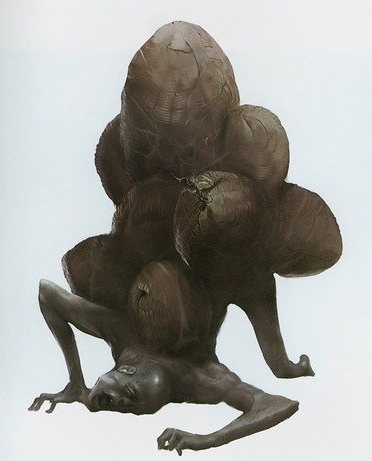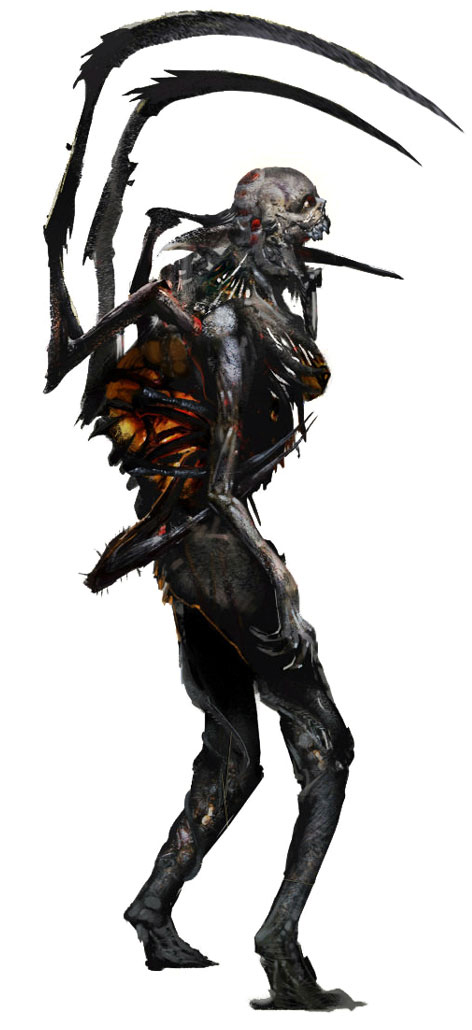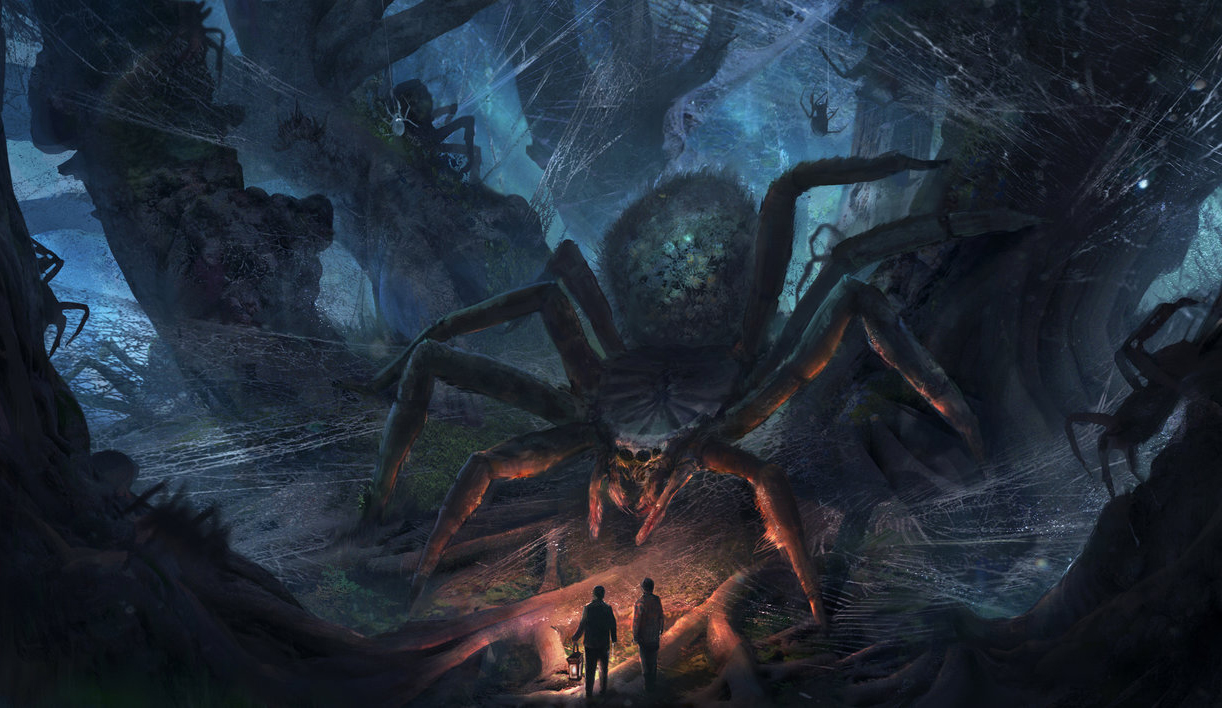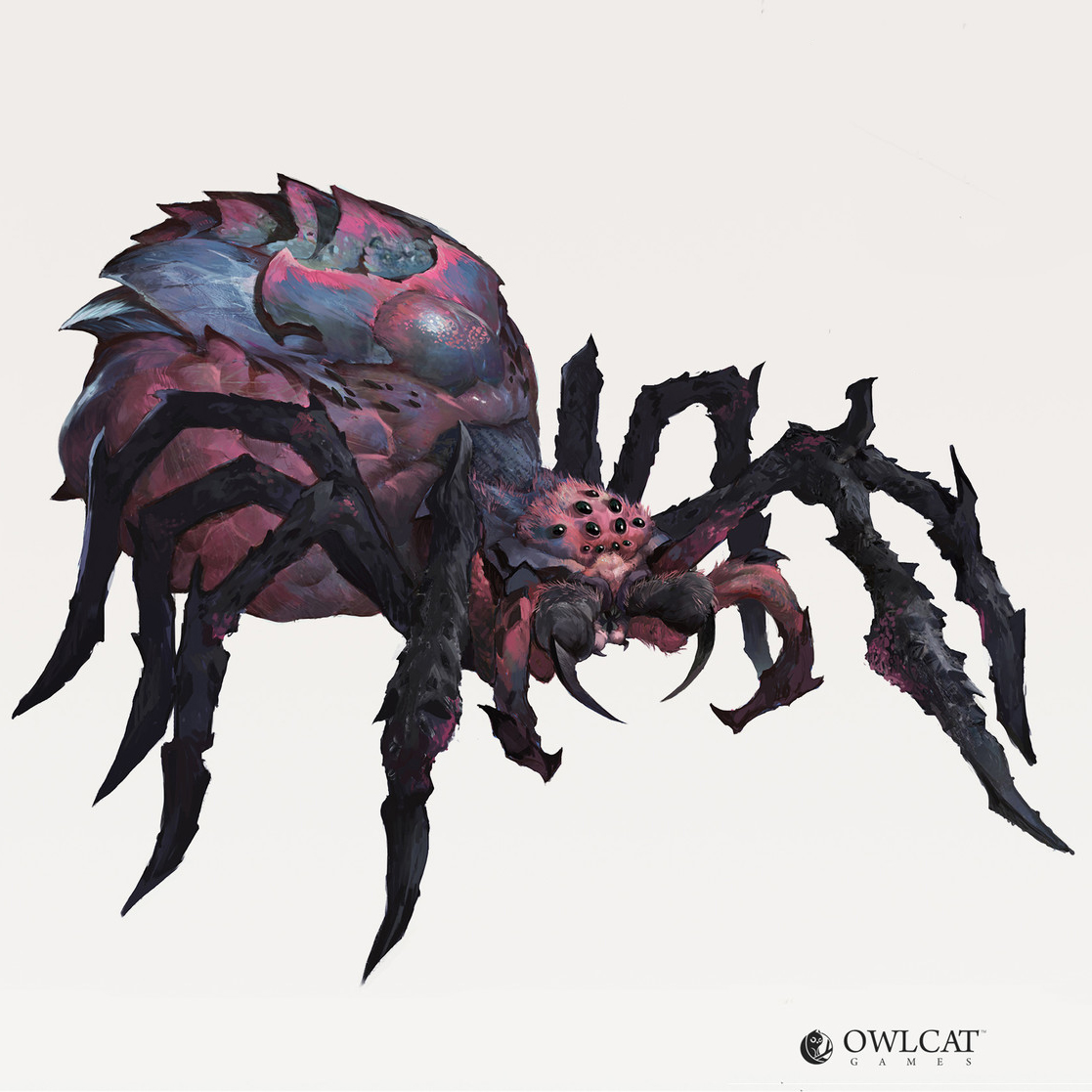Arachne are a large species of arachnids most commonly found in thick forests and swamps across Southern Ivskia and Karda, though traces can be found in most warmer climates around the world. They are the largest discovered species of arachnid, ranging anywhere in stature from the size of a hunting dog in the case of newly-hatched specimens to the size of a siege machine in the case of their rarely-seen broodmothers.
Thankfully preferring to make their homes far away from civilization, arachne are rarely a threat to any who don't make a habit out of venturing terribly far into the wilderness, and their thick-spun webbings left for miles around their hives are usually more than enough to stop travelers from stumbling into an untimely death at their hands.
Nests and Hunting
Though lone arachne are not incredibly rare to find, the large spiders most commonly live in small communities or hives in dark, damp locations fortified by thick walls and bundles of their strung-together webbing, allowing the creatures to detect disturbances from great lengths away and alert other members of their community to properly defend the hive, their eggs, and their food supply.
Unlike most more regularly-sized spiders, arachne gather their food supplies not by attracting prey into their webbing or setting ambushes for unsuspecting passers-by but by hunting and scavenging. Due to their size and the locations in which these spiders most often call home, grazing mammals such as deer, cattle, and horses make up the majority of an arachne hive's food store, though more exotic and possibly carnivorous animals may be found depending on the hive's location and desperation.
Once gathered, food is stored near the center of the hive in a sort of communal pile, separated into two piles following breeding so that the food isn't depleted before their eggs may hatch, and it sometimes partially buried by stones or covered in thick webbing in efforts to slow down the decay.
These hives seem to be organized similarly to community-dwelling insects such as ants or bees, wherein male "warriors" and "hunters" make up the bulk of of the nest's numbers while a smaller amount of female spiders stay deep within at all times to protect the eggs, the food, and the young. If a broodmother is present, they are usually dormant unless the hive faces a significant threat.
Eggbearers
Some of those unfortunate enough to begin a colony near an arach hive, or to be outnumbered by a wandering group of the creatures, meet a fate that many consider to be worse than death - the fate of the egg bearers. Arachne, like many other types of spiders, lay their eggs within a once-living host so that their larvae may grow inside the warm environment before hatching and eating the flesh surrounding them. Terrifyingly, arachne seem not to care if a creature is killed or not before used as a host for their eggs, and some may even prefer living vessels to provide a more nutritious first meal for its young, once they hatch.
Eggbearers may be any type of large beast, though sometimes a kith is snatched by an arach hunter and brought to a female to be implanted with eggs and forcefully nourished until the eggs have hatched or grown too large to be carried. While entirely helpless against any would-be attackers, eggbearers often do not try to escape death, as they will be killed once their eggs hatch, regardless. Many attempt to crawl away from the arach hives they've been imprisoned in only to be ushered back within by the female caretakers.
More nightmarish still are accounts of eggbearers which are not released from their gruesome fates once the brood within them hatches. A small number of arach communities have been observed exhibiting parasitic qualities over the eggbearers once the young have hatched, wherein a single member of the newly-hatched spiders chooses to latch onto its host rather than consume it.
Broodmothers







Comments